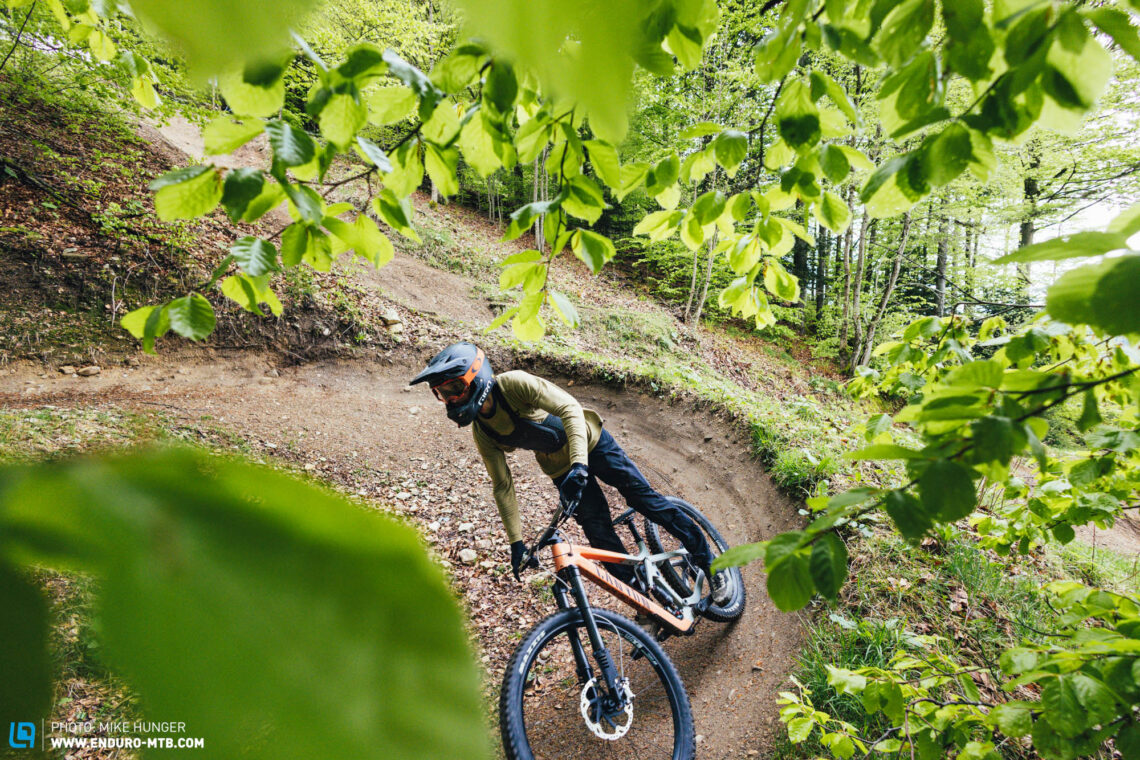Our long term review of the Bright Next upside-down suspension fork – The underdog without sag?
For the small Italian brand, Bright, making an upside-down suspension fork with a carbon casting wasn’t challenging enough. Instead, they also designed it to be ridden without sag. We put the Bright Next enduro fork through the wringer to see how the concept performs.

Upside-down suspension forks are extremely rare on mountain bikes, but you’ll hardly find anything else on MX bikes. Bright Racing Shocks from Italy, however, are convinced that upside-down forks offer some unbeatable advantages and that we’ll start seeing them on mountain bikes more often in the future. The damping of the fork is taken care of by a specially developed, preloaded cartridge. As a result, Bright’s forks have virtually no sag. The Next fork on test is equipped with their ACAD #7 cartridge – the “AntiCavitation Active Damper” providing the fork with its unique feel. Since you ride the fork without sag, the specified travel is also less than other enduro forks. In our case, the 150 mm travel Bright Next replaces a 170 mm travel FOX 38 on a Canyon Strive. Since the FOX fork offers 144.5 mm travel at 15 % sag, it has a little less travel at sag than the Bright fork.
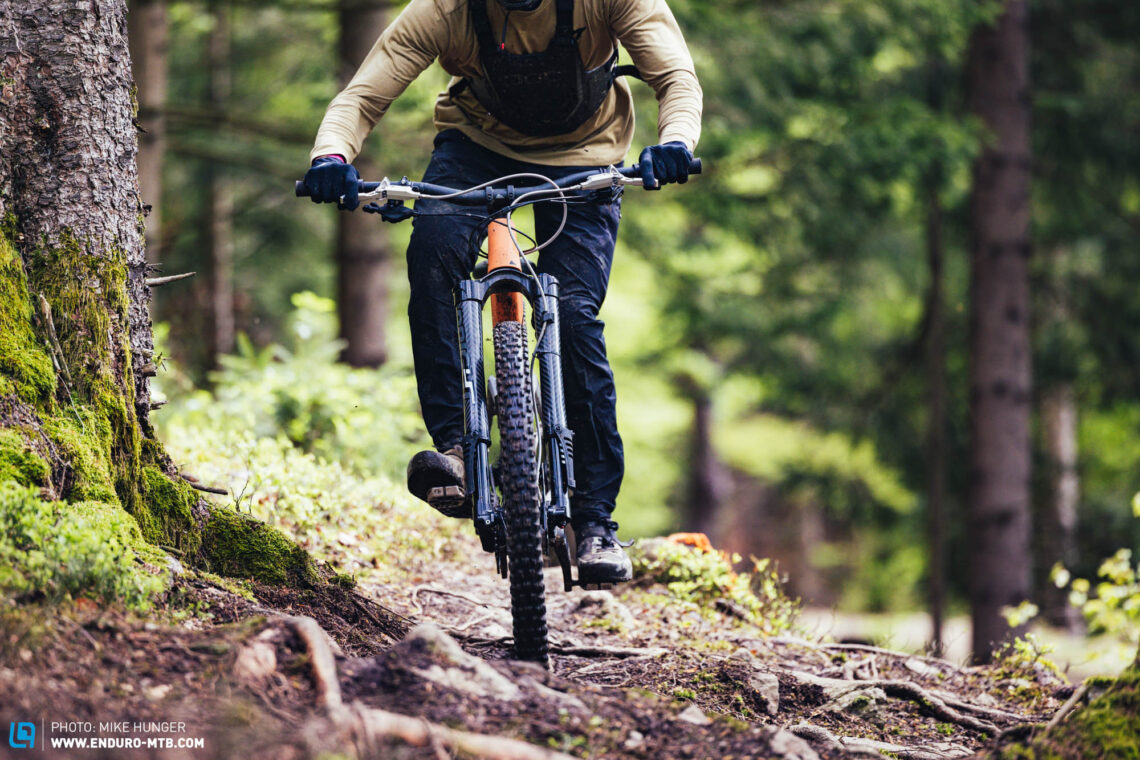
One problem that many upside-down (USD) mountain bike forks have is that they are significantly less stiff, and therefore less precise, due to the lack of a fork bridge. Bright claim to have addressed this problem with the use of special, slightly hour-glass shaped fork legs, which contain widely spaced, floating guide bushings for the stanchions, along with using a special carbon layup for the legs.
In addition to our tested Enduro model, the Italian brand also offer a 105 mm travel variant for downcountry bikes and a 130 mm travel trail fork. The 130 mm fork is also available with 120 or 135 mm travel, while the 105 mm travel variant is also available with 100 or 115 mm. The forks are developed and manufactured in Italy, with some machined parts sourced from Germany, and this comes at a price: the Bright Next will set you back by a hefty € 2,030. That’s just under € 400 more than you would pay for the flagship FOX 38 Factory model. If you opt against the stanchion guards, you can instantly save € 150, though it also means that your stanchions will be exposed to flying stones and debris. In terms of weight, the 2.32 kg fork is on par with the competition from FOX and RockShox.
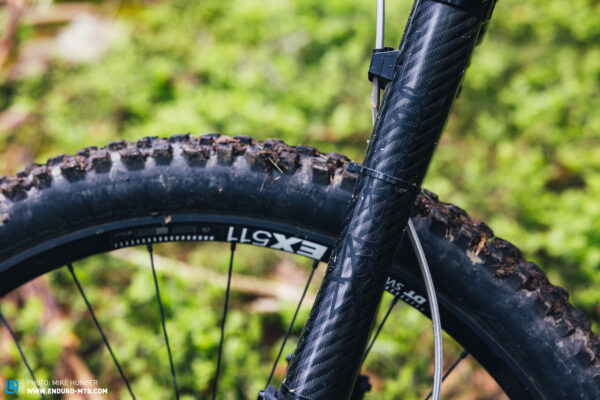
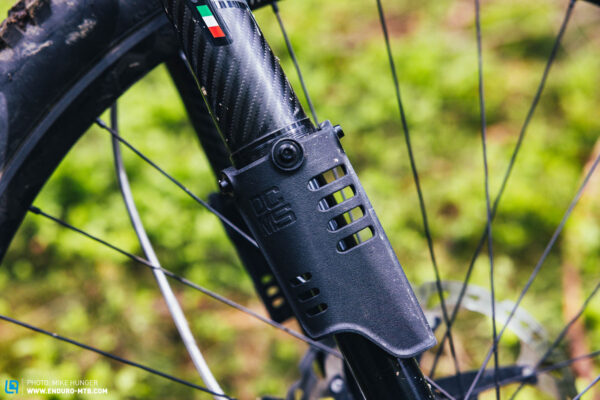
Fitting the Bright Next inverted fork
The first time you hold the Bright Next in your hands, you’ll be struck by the cool look of the visible carbon weave on the legs, the wide, machined fork crown, and burly stanchions. The rebound and compression damping can be adjusted on the left side, but don’t click to indicate different positions. The rebound can be adjusted with a 3 mm Allen key, offering an adjustment range of 3.5 rotations, while the compression can be adjusted by about three quarters of a turn without tools. In addition to the damper, the left leg also houses the air spring, which is inflated via a valve at the bottom of the fork leg, close to the brake mount. According to Bright, there are some advantages to putting the damper and spring into the same leg. First of all, it promises to save weight, but also simplifies maintenance, since you can replace the entire unit without having to disassemble the fork. Finally, Bright claim it does a better job of keeping the components aligned, because the forces acting on the fork all do so on top of each other. Since the internals are all on the left side, it should also perform better at damping vibrations that come from the brake.
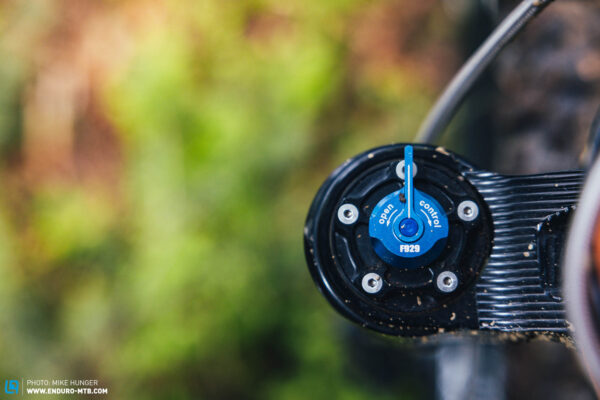
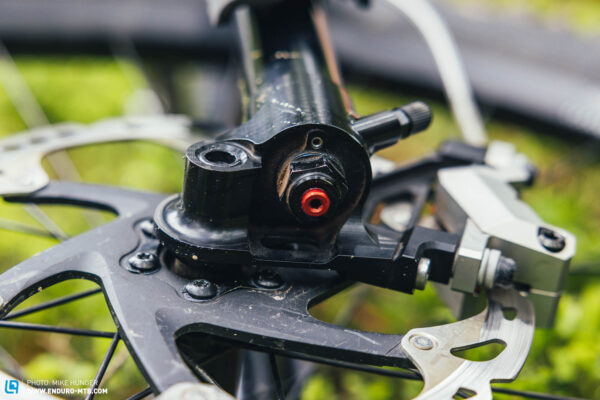
The brake line is held in place by a single, glued-on cable guide. Instead of getting clamped into place, the cable sits loosely in the guide. Fortunately, however, this didn’t result in any annoying rattling on the trail. But be careful! Since the lower part of the fork compresses and this section of the brake line is left to its own devices, there is a risk that the line could bulge outwards and get into the spokes. As such, Bright advise keeping the brake line as short as possible and not using old, “pre-bent” brake lines. To be on the safe side, you can also fit a second cable guide to the lower part of the fork. We simply resorted to good-old cable ties.
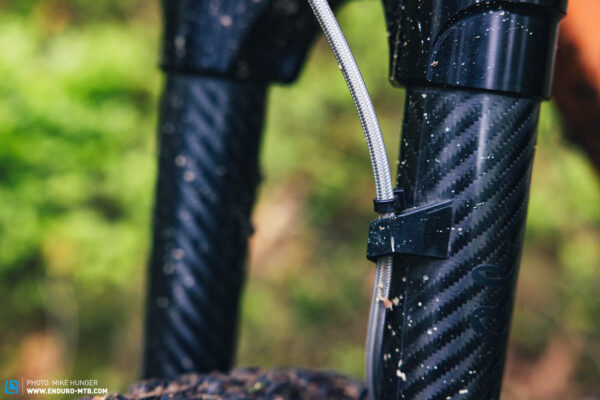

Before fitting the Next, it is important to make sure that you’ve got torque cap end caps on the hub of your front wheel. These help transmit lateral forces into the hub instead of the fork legs. Most major wheel brands offer torque cap conversion kits. Apart from that, fitting the fork is like any other. According to Bright, the fork’s brake mount is designed for 203 mm rotors, but our 203 mm Shimano rotor rubbed slightly on the caliper of the 612 brakes, so we had to move the caliper further away with the help of spacers.
The Bright Next USD fork on the trail
When setting up the Bright Next, we started with a pressure of 55 psi with a rider weight of 75 kg, according to the manufacturer’s recommendations. That’s a relatively low pressure compared to other forks in this segment. We opened the rebound 1.5 turns from the closed position. This is near the middle of the adjustment range, which is intended for an average rider weight and should therefore give lighter and heavier riders sufficient leeway. We left the compression open.
If you sit down on the bike, the fork initially sags slightly but then remains firm. There’s no bobbing or bouncing up front when pedalling either – whether on flat terrain or uphill. Even with the compression completely open and an irregular pedal stroke, the fork doesn’t budge. If you close the compression, the fork is locked-out.
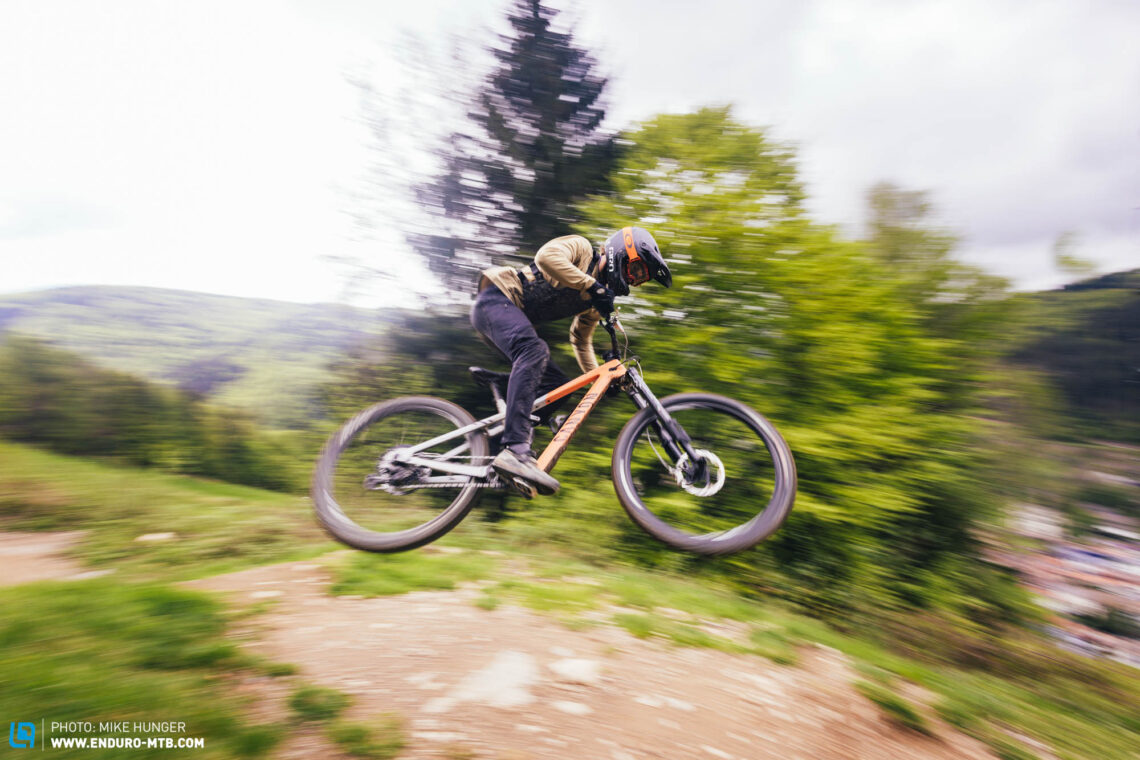
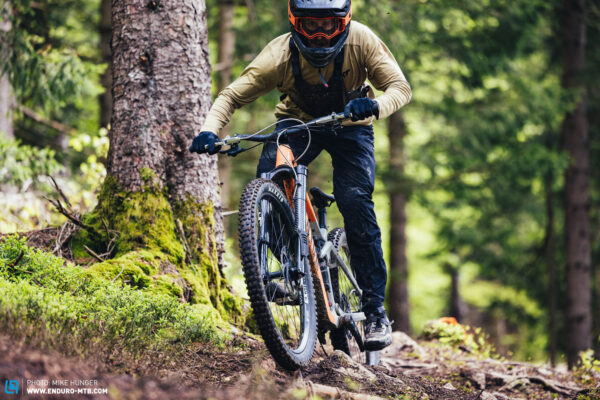

Riding downhill, the Next doesn’t respond sensitively to small bumps on flowing, moderate trails. It continues to feel as firm as when you’re pedalling uphill, passing small impacts and vibrations on to the rider. As such, there is a slight imbalance between the front and rear end on flowing trails, since the front of the bike feels significantly firmer than the rear – despite us leaving the compression completely open. After the first couple of rides, we reduced the pressure slightly, which improved the fork’s sensitivity and therefore the front-to-rear balance. If you drop the pressure too low, however, you’ll find a lack of support, often bottoming out the fork through heavy compressions. In the end, we struck a good balance of support and sensitivity at 53 psi. However, the response still doesn’t compare to the competition from FOX or RockShox. The lack of sensitivity is particularly noticeable on slow, slippery trails. Since the impacts encountered in those situations are gentle and slow, the fork remains firm and hardly uses any of the available travel. This makes the front end hard to control on slow, technical, and slippery terrain, as the front tire will bounce and lose traction rather than staying stuck to the ground.
However, the Bright fork can play to its strengths on trails that are dry and, above all, rough. As soon as the hits get bigger and come at you faster, the Next offers its travel generously, providing a linear feel throughout the entire length of the stroke. As a result, it feels very controlled on fast and rough tracks, no matter how bombed-out, always providing just as much travel as you need. This instils the rider with unparalleled levels of confidence and no other fork we’ve tested to date feels as sure footed in this kind of scenario as the Bright!

We have no gripes regarding fork stiffness, and the precision of the Next is on par with big name enduro forks. One peculiarity of the zero-sag damper, however, is that it tops out rather harshly when pulling up the front wheel, such as when popping a wheelie, manualing, or jumping. You can feel and hear the fork topping out every time the front wheel gets airborne. According to Bright, this shouldn’t be a problem and we didn’t feel any loss of performance on the trail. Apart from that, you must pull a little harder on the handlebar to lift the front wheel, because you don’t have the usual 25 mm sag that initially helps you lift the front end. When landing a jump, however, this also means you regain control of the front wheel sooner. Since there is no sag, from the moment the front tire touches the ground, you’ve instantly got the fork’s full support and thus control of the front end.
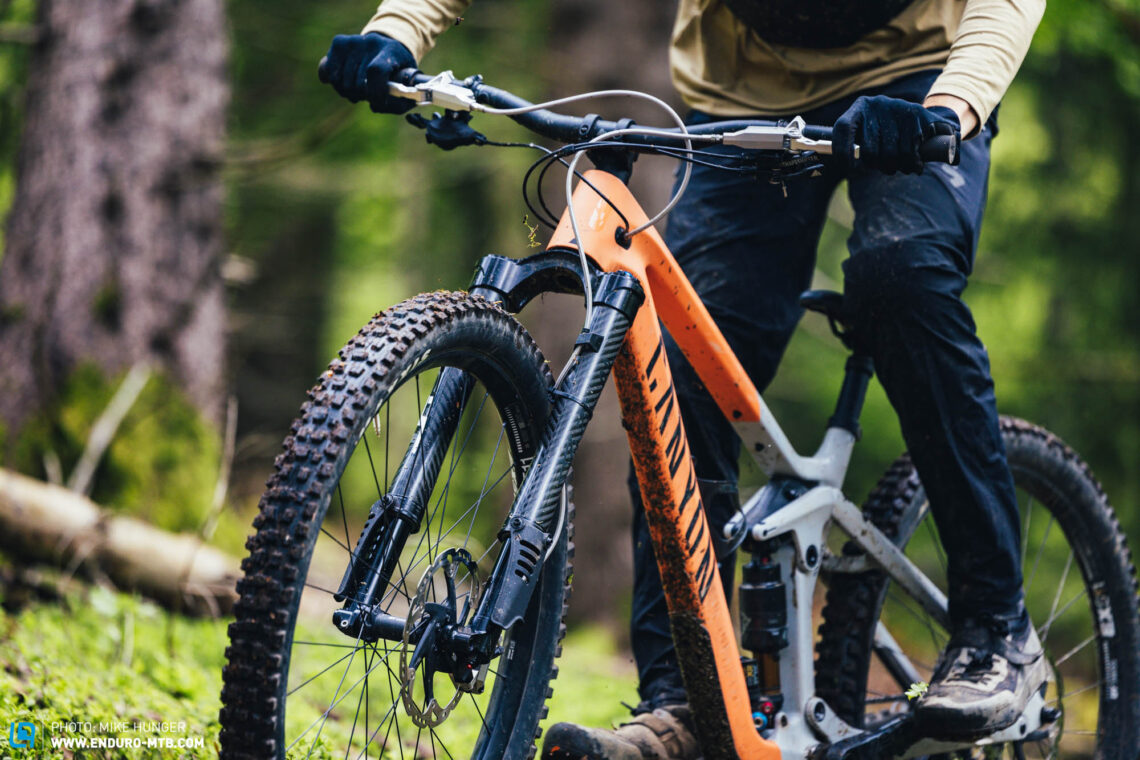
Conclusion on the Bright Next inverted suspension fork
The Bright Next doesn’t just stand out from the crowd due to its unusual, premium look, but above all because of its unusual zero-sag concept. This allows the fork to offer a very efficient pedalling platform, but makes it feel harsh on flowing, moderate descents that don’t demand all its travel. However, when things get fast and rough, the Next suspension fork provides a lot of control and stability, thereby instilling the rider with confidence.
Tops
- premium, unique look
- lots of support with a linear feel
- lots of control on fast, rough trails
Flops
- minimal small bump sensitivity
- brake line must be shortened precisely
For more information, visit brightracingshocks.com
